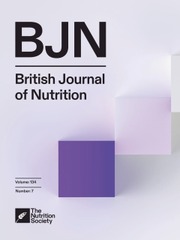No CrossRef data available.
Article contents
Turkish adaptation of the Eating-Related Eco-Concern questionnaire: validity and reliability study
Published online by Cambridge University Press: 22 August 2025
Abstract
The study aimed to translate the Eating-Related Eco-Concern (EREC) questionnaire into Turkish, adapt it cross-culturally, and evaluate its psychometric properties. EREC is a ten-item scale measuring how adults consider ecological impact in food choices due to climate change concerns. The study was conducted in Mersin between November 2023 and February 2024 with 442 adults (18–65 years) through face-to-face interviews. The Turkish version was adapted using the Translation–Back Translation method, and language validity was ensured. Face validity was evaluated through a pilot study with forty participants. Construct validity was initially assessed using exploratory factor analysis (EFA) with data from 200 participants, followed by confirmatory factor analysis (CFA) conducted on an independent sample of 242 participants to verify the factor structure. The reliability of the scale was assessed by test-retest analysis with 106 participants from the main sample (n 442), and consistency was measured by the intraclass correlation coefficient (ICC). The factor structure and model fit were evaluated using indices such as Comparative Fit Index (CFI), Goodness-of-Fit Index (GFI) and root mean square error of approximation (RMSEA). 68·3 % of the participants were female, whereas 31·7 % were male. The group’s median BMI value was 24·3 (21·6–27·1), with 52·9 % classified as ‘normal’ according to the BMI classification. Factor 2 had a low score, but it was found to be adequate for other factors and the total scale score. The Turkish adaptation of the EREC questionnaire has been found to be a valid and reliable scale, as confirmed by comprehensive evaluations.
Information
- Type
- Research Article
- Information
- Copyright
- © The Author(s), 2025. Published by Cambridge University Press on behalf of The Nutrition Society


